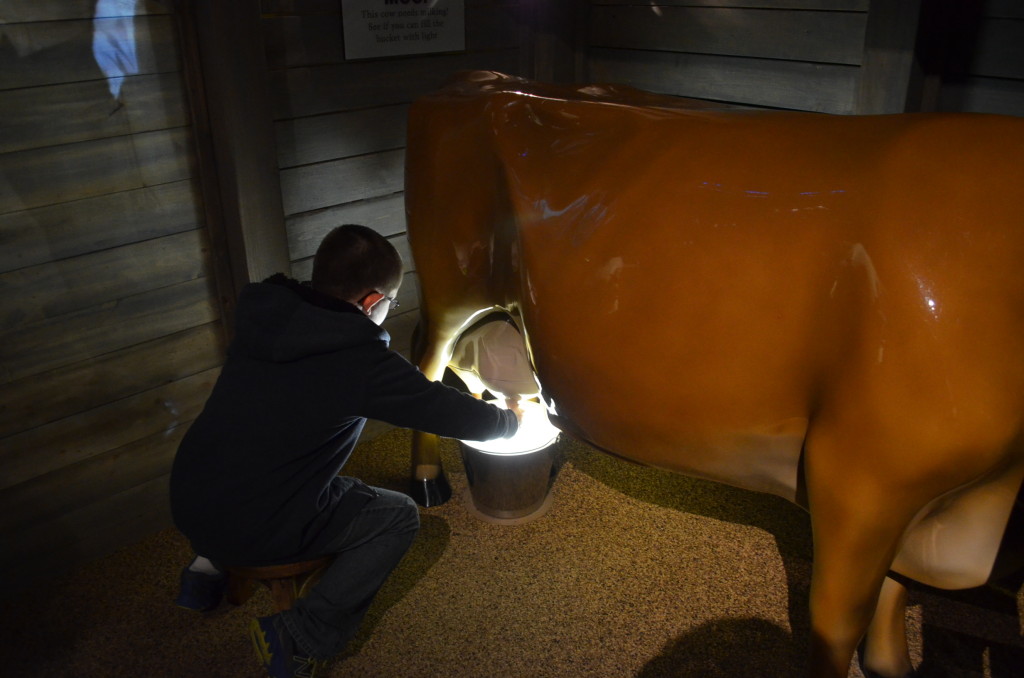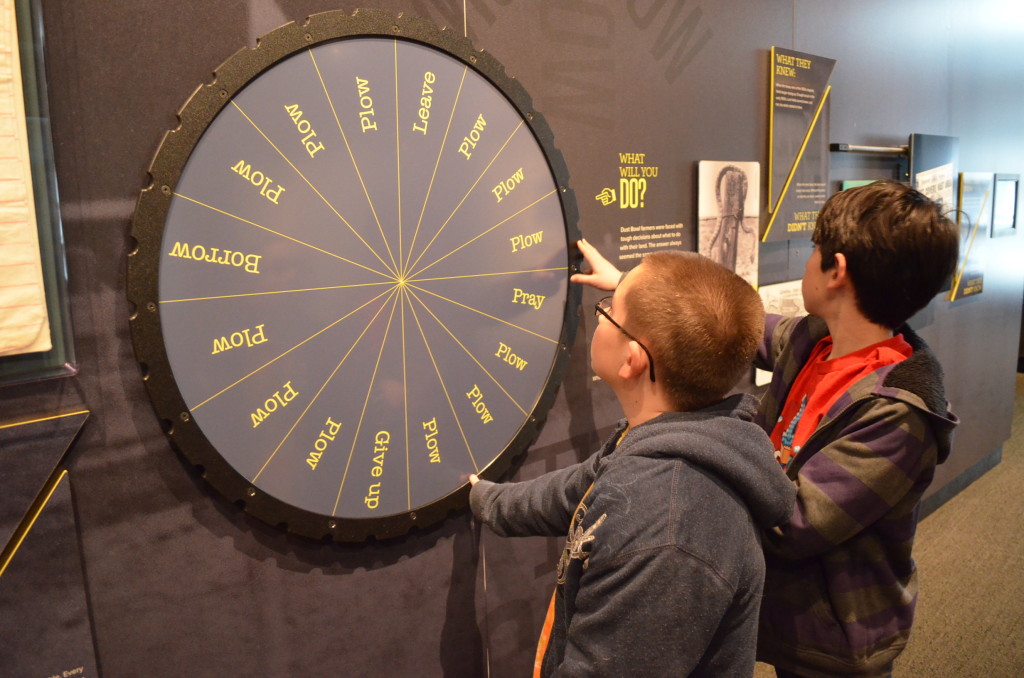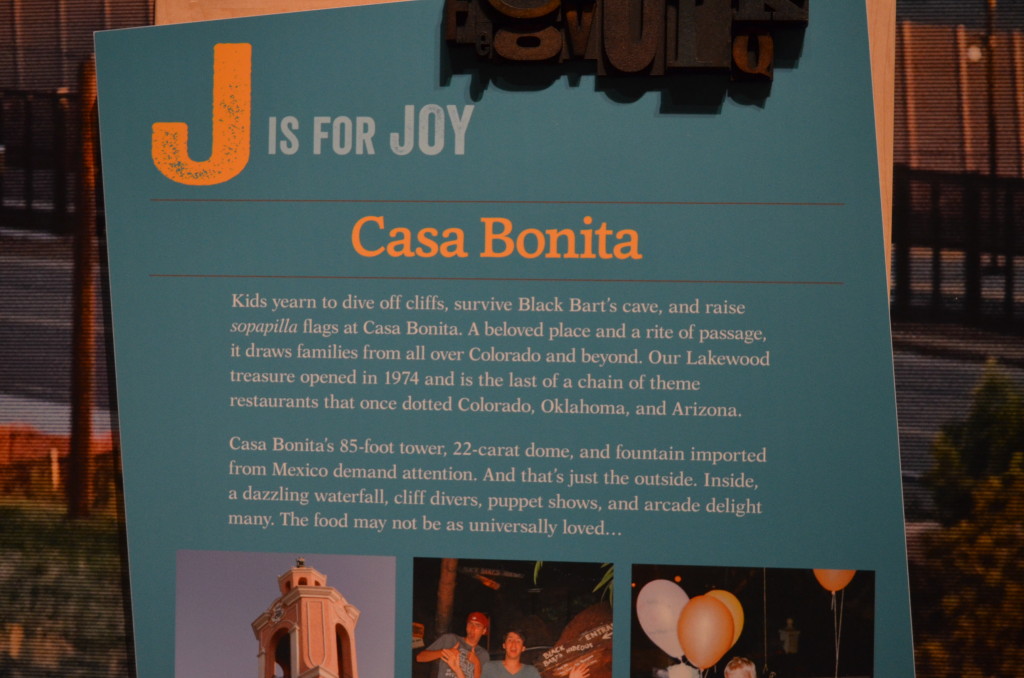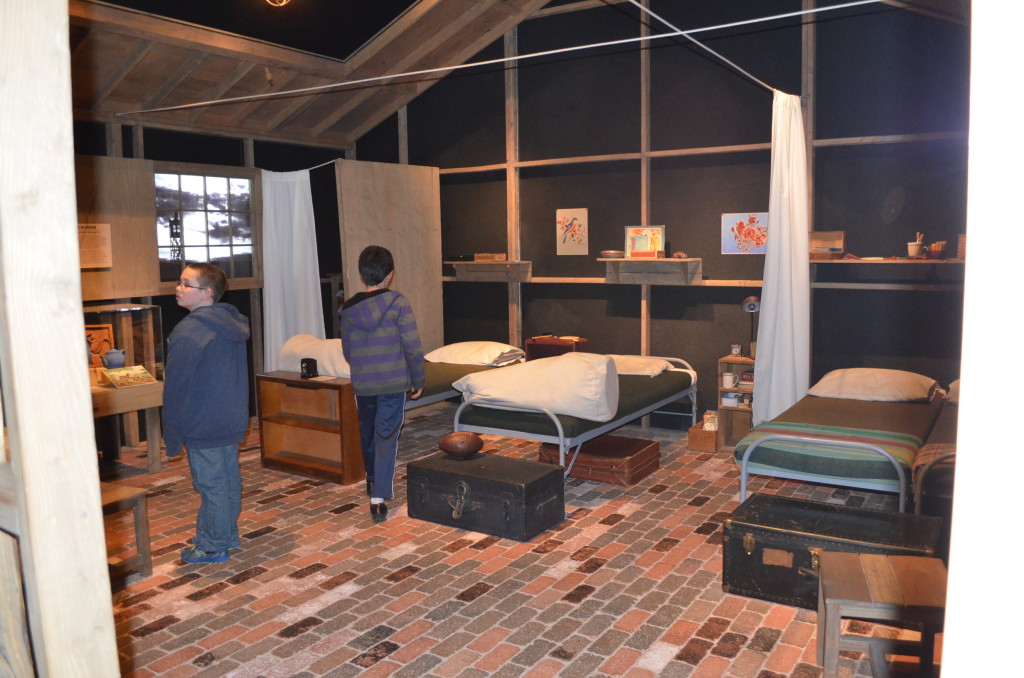
This beautiful new facility opened in Spring 2012. It’s not completely full, there’s plenty of room to populate with more exhibits.
I’ve been remiss. 2 1/2 weeks since my last post. Things have been getting progressively busier in the Vollmer house as our boys have started their baseball practice with their new baseball program: Academy Little League.
The boys were out of school on Valentine’s Day, so we took the day and cashed in on part of the Christmas gift from my dear sister’s family: tickets to the History Colorado Center in downtown Denver. As I’ve written for the GeekMom blog, I love state history museums, and I’ve dragged our sons to the history museum for every state we’ve lived in since they were born.
The center opened in April 2012, and is deemed the replacement for the Colorado History Museum.
There are several large exhibits, as well as a few smaller nooks and crannies that we were able to explore. I’ll share a picture or two from each of what we had explored.
Destination Colorado
The first of the large exhibited we visited was called “Destination Colorado”. It was a thorough exploration of the town of Keota, Colorado during the 1920s. There was a mock up of a home, a general store, a really cool Ford Model T ride, and some artifacts from modern-day Keota (mostly from throughout Weld County).

The kids were able to sit in this Model T Ford and view a projector screen in front of them as it drove through some pretty rugged Keota, Colorado terrain. They have to stop for cattle and a dust devil. The car shook over the rough road. It’s a very cool exhibit for kids.

You could milk a virtual cow. The bucket would light up as you milked properly. I thought this was a clever way to show its point.
Living West
This exhibit was perfect for my boys. It was an interactive, multidisciplinary exploration of Colorado’s relationship with its environment via three major facets in Colorado’s history: Mesa Verde in southwest Colorado, the impacts of the Dust Bowl on eastern Colorado, and life in the mountains.
With the Mesa Verde exhibit, we learned about what life was like for the Anasazi peoples during the early part of the millenium. The kids explored the plants and animals that lived in the area, and the boys had a chance to make a length of cord through a pretty neat demonstration table.

Timmy making cord. There were instructions posted. This was part of why I thought my sons were a good age for this area of the museum. You clearly get the most out of it if you know how to read.
The second area was about the impacts of the Dust Bowl on Colorado. There were displays about the migration of Americans westward to settle the Great Plains, including eastern Colorado.

Here the boys spun a wheel showing what options farmers had when facing hard times. As you can see, there weren’t many choices. This was a cool way to engage the kids in learning about Colorado during the Dust Bowl years.
The other thing that we remember from this exhibit was the “Dust Bowl Theater”, where we could sit in a mock up of an eastern Colorado farm house and listen to first-person accounts of what the dust storms were like in the 1930s. The accounts specifically referred to the “Black Sunday” storm of April 1935. A window looking out would show the dust storm approaching, the darkness and noise that resulted, and the feelings of peace when it subsided, even though a real dust storm lasted for hours. You could even smell the dust storm! This part of the exhibit was very well done, although I don’t recommend it for younger children. It’s quite realistic.

The window in the “Dust Bowl Theater” is showing the approaching “Black Sunday” dust storm of 1935. It got very loud and very dark for a couple minutes during this presentation. I’m glad my boys got to experience this; it prompted a lot of discussion of what the Dust Bowl was and what American agriculture does today to prevent it from happening again.

This was a fantastic demonstration model of how improved water management practices have kept a “Dust Bowl” from happening again. There were switches to flip and wheels to turn which showed the boys the effects on the lakes, reservoirs, and agriculture.
The third part of the Living West Exhibit was about the modern day mountain ecosystem. You could sit in a theater and take a 4 1/2 minute drive from Denver to Breckenridge, with stops along the way to explain the terrain, the infrastructure that has developed in the past century, and its impacts on the ecosystem. Such topics as climate change, bears and elk living among the humans, and population trends are explored.

This model of a ski lodge had some awesome historic ski resort posters, and a trivia game about Colorado flora and fauna, as well as history of Colorado development. I like these chairs.
We then visited a mock up of a ski lodge, which had a Colorado ecosystem trivia game that the boys really enjoyed.
This is also an exhibit that favors guests who can read. The topics are more advanced and might not be well-understood by the youngest visitors.
Denver A to Z
In this area were 26 Denver-unique displays celebrating the city. This was a somewhat chaotic exhibit, but had plenty of things for visitors of all ages. We enjoyed learning more about the Big Blue Bear, big blue Bronco, and some of Denver’s architecture.

Of course there’s a large area dedicated to the Broncos. “D is for Devoted”. The “Barrel Man“‘s family donated his barrel and boots to the museum after he passed away in 2009. Mockups of the barrels are available for the kids to model.

Jacob had a phase where he wasn’t interested in such interactive features in a museum. He’s over that now. I love it!

I was so excited to see this here. Under “J is for Joy”, there is homage paid to Casa Bonita, a Mexican restaurant with a whole lot more (stay tuned for a Colorado Discovery REAL SOON about this place). This area includes the entire <censored> Casa Bonita clip from Comedy Central’s “South Park”, which is played over and over with permission from Colorado Natives Trey Parker and Matt Stone.
Colorado Stories
This area of the museum has a smattering of additional exhibits, none of which are significantly related. All are very interesting, but I didn’t quite understand what lumped them together into one exhibit.
First of all, we learned about Bent’s Old Fort, which was near La Junta in the southeastern part of the state. You will learn why the fort ended up in that location, who lived at and maintained the fort, and the types of commerce that went on there. You can also go to visit the National Historic Site near La Junta, with a map and information provided at this particular exhibit.
Next, you can see a fantastic exhibit about mining in Colorado, complete with a mock up of Silverton’s Sunnyside Mine to explore. First you step into the elevator, close the doors, and listen and feel as the mock elevator “descends” into the mine. When you emerge on the other side, tall vertical video screens will show miners giving instructions on such tasks as packing explosives and tapping out the ore.
After the mining exhibit, we then explored some of the ski history, including a ski jump simulator having you try your luck on Colorado’s famous Howelsen Hill in Steamboat Springs.

Jacob trying his hand at the ski jump. He kept crashing, while Timmy succeeded every time. We still don’t understand why.
The final area in Colorado Stories worth mentioning is the Granada War Relocation Center exhibit. This was haunting indeed, and prompted a discussion with my sons about this not-so-proud moment of American history: as a reaction to the 1941 Pearl Harbor bombing, Japanese-Americans were ordered to “relocation camps”, most of which were in the central plains states (as far from coastlines as possible). George Takei spent time at a relocation camp in Arkansas as a child.
You can visit a mock-up of one of the open bay “barracks” and view some first-person resource artifacts.

Haunting, indeed. A letter ordering a Japanese-American Grand Junction resident to the Ameche Camp in 1943.

A mock up of one of the multi-family units. Japanese-Americans donated numerous artifacts for this display.
In addition to these exhibited, we enjoyed other small visual displays. There is also a nice restaurant on the premises. We enjoyed our day.

Signs such as these welcome folks to the state. I should check if I have a picture of it from my numerous I-76 crossings between CO and Nebraska. In the meantime, you can look at it this way.

Colorado is very proud of Lakewood High School’s “Roar” video from last fall. You can watch it in an endless loop here.
The History Colorado Center is located on 1200 Broadway in Denver, about a block from the Denver Art Museum. Standard adult admission is $12, children ages 6-12 cost $8. Student, senior, and military discounts are available, as well as museum memberships. Be prepared to pay for parking either at a meter or a public parking garage. Our family spent about 3 hours there and covered most of the museum.





Recent Comments